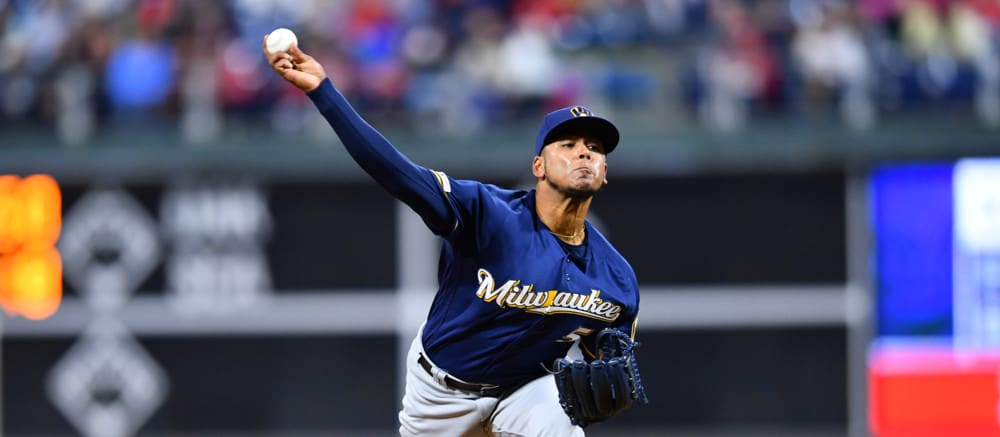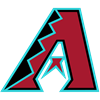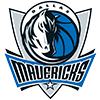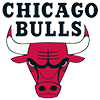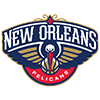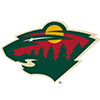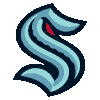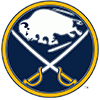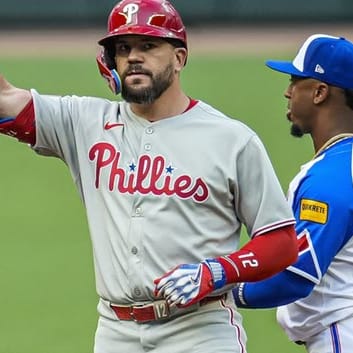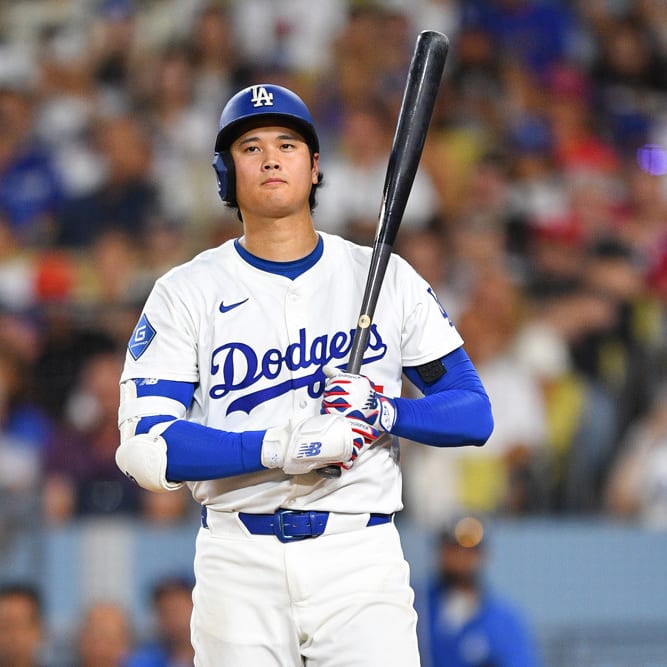The last few rounds of a draft might be my favorites. Early rounds are far more stressful. Mess up a pick in those rounds and there's a chance your draft could be sunk. You also miss far more of your guys early. If you like two players near the top of the board in the third round, you'll only end up with one unless you're close to the wheel. Additionally, it's tough to jump players multiple rounds above their ADP early on, as the opportunity cost is too high. It's often correct to hope your guys come back to you to not take too much of a hit to the rest of your roster, which can lead to frustrating results when your guys turn out to be someone else's guys too.
The late rounds, by contrast, are stress-free and offer far more opportunities for creativity. If your reserve-round pick busts, you can console yourself with the reminder that you were always likely to drop most of your picks in these rounds anyway. ADP starts mattering far less, as people start going after their personal favorites. There's plenty of incentive to join them. If you really like a player who's going in the 29th round, you lose very little by selecting him in the 24th or 25th, as it's highly unlikely the alternative options you skip in those rounds will come back to haunt you.
That freedom means I often find myself turning to the same players in these rounds across
The last few rounds of a draft might be my favorites. Early rounds are far more stressful. Mess up a pick in those rounds and there's a chance your draft could be sunk. You also miss far more of your guys early. If you like two players near the top of the board in the third round, you'll only end up with one unless you're close to the wheel. Additionally, it's tough to jump players multiple rounds above their ADP early on, as the opportunity cost is too high. It's often correct to hope your guys come back to you to not take too much of a hit to the rest of your roster, which can lead to frustrating results when your guys turn out to be someone else's guys too.
The late rounds, by contrast, are stress-free and offer far more opportunities for creativity. If your reserve-round pick busts, you can console yourself with the reminder that you were always likely to drop most of your picks in these rounds anyway. ADP starts mattering far less, as people start going after their personal favorites. There's plenty of incentive to join them. If you really like a player who's going in the 29th round, you lose very little by selecting him in the 24th or 25th, as it's highly unlikely the alternative options you skip in those rounds will come back to haunt you.
That freedom means I often find myself turning to the same players in these rounds across my drafts. I'll use the rest of the introductory space this week to highlight the types of players I target late in drafts. All players listed have March ADPs in the 24th round or later in 15-team leagues.
Unproven starters with high strikeouts rates
| Pitcher | Team | 2020 K% | 2020 IP | 2020 ERA | March ADP |
|---|---|---|---|---|---|
| Adbert Alzolay | CHC | 33.3 | 21.1 | 2.95 | 457.1 |
| Trevor Rogers | MIA | 30.0 | 28.0 | 6.11 | 484.5 |
| Daniel Ponce de Leon | STL | 31.5 | 32.2 | 4.96 | 610.5 |
| Adrian Morejon | SDP | 31.6 | 19.1 | 4.66 | 650.2 |
| Keegan Akin | BAL | 30.2 | 25.2 | 4.56 | 661.4 |
I'm usually trying to fill most of my bench with starting pitchers. This gives me more potential two-start weeks as well as more chances to find a breakout starter. I prioritize strikeouts throughout my entire pitching staff, on the theory that it's far easier for a high-strikeout, shaky-ERA guy to suddenly excel in both categories with some good BABIP luck than it is for a low-ERA, mediocre-strikeout guy to suddenly learn how to put hitters away. That's even more true in the late rounds, where every player is either flawed or unproven. These pitchers have already shown the ability to do the thing I care about most very well, but other flaws, inexperience or uncertain roles keep them cheap for now.
Hitters eligible at multiple spots
| Player | Team | Positions (NFBC eligibility) | March ADP |
|---|---|---|---|
| Tommy La Stella | SFG | 1B/2B | 366.2 |
| Joey Wendle | TBR | 2B/3B/SS | 374.1 |
| Scott Kingery | PHI | 2B/OF | 429.1 |
| Enrique Hernandez | BOS | 2B/OF | 437.1 |
| Luis Urias | MIL | 2B/3B/SS | 529.6 |
As mentioned, I'm trying to spend as many bench spots as possible throwing darts at starting pitchers who could potentially break out. That leaves very few spots for hitters, so I'm willing to push up hitters who can cover for multiple injuries. I try to leave a draft with one extra hitter at each spot other than catcher. With the middle-infield, corner-infield and utility spots in standard setups helping me reach that goal, I usually get away with just one or at most two hitters on my bench. Names like the ones listed here are key, though you don't always need to target these guys if you've picked up enough flexibility with dual-eligible guys in the earlier rounds. The exact players who fit this criteria will vary based on your league's setup.
Third relievers
| Player | Team | March ADP | Team's Second RP | Second RP's ADP |
|---|---|---|---|---|
| Pete Fairbanks | TBR | 456.9 | Diego Castillo | 331.8 |
| Emilio Pagan | SDP | 561.3 | Mark Melancon | 269.4 |
| Jose Alvarado | PHI | 658.3 | Hector Neris | 335.1 |
| A.J. Minter | ATL | 667.0 | Chris Martin | 386.0 |
| Joe Jimenez | DET | 673.4 | Gregory Soto | 562.1 |
With so few true closers to go around this season, I'm typically trying to grab two nearly locked-in closers early in the draft and hoping to avoid the late-round reliever mess entirely. When I'm unable to do that, however, I prefer to wait until very late to pick up a team's third reliever in many cases rather than grabbing the second option several rounds earlier. While there may be a clear No. 1 and No. 2 option in some bullpens, the hierarchy for most teams isn't nearly so clear. There may be a consensus among the fantasy community in some cases, but in reality the gap between a team's second and third options in unsettled bullpens is often far smaller than their respective ADPs would suggest, and the hierarchy could be flipped very early in the season based on the relievers' first few outings. In leagues deep enough where I'm targeting this sort of player, I'd rather save the draft capital and go with someone who's effectively free and at most marginally less likely to pick up saves.
Some of the players listed above may no longer be available in the reserve rounds for long as more drafters turn in their direction. Others, including some mentioned in this article, will rise out of this range for other reasons. It's the category of player that matters more than the specific players themselves, however, so it will remain worth it to chase players of these archetypes even if the names mentioned here no longer come cheap.
RISERS
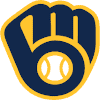 Freddy Peralta, RP, Brewers: Peralta's stock has soared recently. His NFBC ADP came in at 352.1 through the end of February but rose to 321.3 the first two weeks of March. In the last week alone, he's risen nearly 50 more picks to 274.9. That rise seems tied to the fact that he appears to be getting legitimate consideration for a rotation spot. He's done everything he can to win one this spring, striking out 10 of the 17 batters he's faced in Cactus League action. Peralta has bounced between the rotation and bullpen throughout his career with mixed results, as his 4.67 career ERA tells a different story than his 3.72 FIP. He has a ton of upside coming off a year in which he posted a 37.6 percent strikeout rate and a 2.41 FIP (though that came with a 3.99 ERA), so it's understandable why drafters would be all over him if he wins a starting job. One note of caution, however: Peralta owns a career 3.59 ERA as a reliever and a 5.45 ERA as a starter, though he did finally add a third pitch (a slider) last season, which could help him face hitters multiple times if he does indeed move back into the rotation.
Freddy Peralta, RP, Brewers: Peralta's stock has soared recently. His NFBC ADP came in at 352.1 through the end of February but rose to 321.3 the first two weeks of March. In the last week alone, he's risen nearly 50 more picks to 274.9. That rise seems tied to the fact that he appears to be getting legitimate consideration for a rotation spot. He's done everything he can to win one this spring, striking out 10 of the 17 batters he's faced in Cactus League action. Peralta has bounced between the rotation and bullpen throughout his career with mixed results, as his 4.67 career ERA tells a different story than his 3.72 FIP. He has a ton of upside coming off a year in which he posted a 37.6 percent strikeout rate and a 2.41 FIP (though that came with a 3.99 ERA), so it's understandable why drafters would be all over him if he wins a starting job. One note of caution, however: Peralta owns a career 3.59 ERA as a reliever and a 5.45 ERA as a starter, though he did finally add a third pitch (a slider) last season, which could help him face hitters multiple times if he does indeed move back into the rotation.
 Emilio Pagan, RP, Padres: Pagan had been mentioned as a member of the Padres' closer conversation throughout the winter, though mostly as an afterthought behind presumed favorites Drew Pomeranz and Mark Melancon. Recent reports suggest he may actually be seen internally as the leading candidate, however. That may not be much of a stretch given that Pomeranz is dealing with forearm issues while Melancon is heading into his age-36 season after recording a 14.7 percent strikeout rate last year. You'd have to look past Pagan's 4.50 ERA last season to consider him a favorite, but there are good reasons to do so, as he pitched through a biceps issue and eventually landed on the injured list. His 2.31 ERA, 36.0 percent strikeout rate and 4.9 percent walk rate as a Ray in 2019 show his upside should he win a true closer role, a job the Padres reportedly intend to have. The list of qualified relievers who have matched or beaten those strikeout and walk rates in a single season the last five years includes just Andrew Miller, Kenley Jansen, Liam Hendriks and Pagan, indicating the type of elite company could find himself in if he's back to full strength.
Emilio Pagan, RP, Padres: Pagan had been mentioned as a member of the Padres' closer conversation throughout the winter, though mostly as an afterthought behind presumed favorites Drew Pomeranz and Mark Melancon. Recent reports suggest he may actually be seen internally as the leading candidate, however. That may not be much of a stretch given that Pomeranz is dealing with forearm issues while Melancon is heading into his age-36 season after recording a 14.7 percent strikeout rate last year. You'd have to look past Pagan's 4.50 ERA last season to consider him a favorite, but there are good reasons to do so, as he pitched through a biceps issue and eventually landed on the injured list. His 2.31 ERA, 36.0 percent strikeout rate and 4.9 percent walk rate as a Ray in 2019 show his upside should he win a true closer role, a job the Padres reportedly intend to have. The list of qualified relievers who have matched or beaten those strikeout and walk rates in a single season the last five years includes just Andrew Miller, Kenley Jansen, Liam Hendriks and Pagan, indicating the type of elite company could find himself in if he's back to full strength.
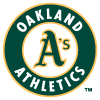 A.J. Puk, SP, Athletics: Puk entered camp likely to open the year in the bullpen, an understandable plan for Oakland given that the young lefty missed all last season due to shoulder troubles that eventually required surgery. With Mike Fiers expected to miss the start of the regular season with hip inflammation, however, a temporary spot has opened in the Athletics' rotation, and Puk appears to be a good bet to claim it. If he does indeed get that opportunity and looks like he belongs, he could well remain in the role for most of the season, though Oakland would presumably still find a way to manage his innings. Puk's 33.9 percent strikeout rate in the minors helped him to a 2.68 FIP (albeit with a much less impressive 3.98 ERA), hinting at the 2016 sixth-overall pick's potential ceiling. Of course, his floor could hardly be lower, as he's thrown just 36.2 innings the last three seasons, but the potential starting role makes him a very interesting lottery ticket as long as that injury risk remains baked into his price.
A.J. Puk, SP, Athletics: Puk entered camp likely to open the year in the bullpen, an understandable plan for Oakland given that the young lefty missed all last season due to shoulder troubles that eventually required surgery. With Mike Fiers expected to miss the start of the regular season with hip inflammation, however, a temporary spot has opened in the Athletics' rotation, and Puk appears to be a good bet to claim it. If he does indeed get that opportunity and looks like he belongs, he could well remain in the role for most of the season, though Oakland would presumably still find a way to manage his innings. Puk's 33.9 percent strikeout rate in the minors helped him to a 2.68 FIP (albeit with a much less impressive 3.98 ERA), hinting at the 2016 sixth-overall pick's potential ceiling. Of course, his floor could hardly be lower, as he's thrown just 36.2 innings the last three seasons, but the potential starting role makes him a very interesting lottery ticket as long as that injury risk remains baked into his price.
 Trevor Rogers, SP, Marlins: Through the end of February, Rogers' NFBC ADP was 504.4. In the last week, that's jumped all the way to 412.7. If you find yourself drafting against a RotoWire staffer, you may have to jump far ahead of that number if you want him, as I moved him up to 251 in my latest Roundtable Rankings, while Clay Link pushed him even further to 240 (which explains why he outbid me for him in our recent Staff Keeper League auction). There's a ton to like for anyone not turned off by Rogers' 6.11 ERA in his seven-start debut last year. That looks to be a small-sample blip driven by a .380 BABIP, as his excellent 30.0 percent strikeout rate would ordinarily be more than enough to make up for his 10.0 percent walk rate. If Ian Anderson's debut excites you, you should love Rogers, as those marks were a near match for Anderson's 29.7 percent strikeout rate and 10.1 percent walk rate. It's hard not to get excited about a lefty whose fastball can touch 97 mph, and Rogers has the minor-league track record and the pedigree as the 13th overall pick in the 2017 draft to back up the notion that he'll be a strong option for the Marlins this season.
Trevor Rogers, SP, Marlins: Through the end of February, Rogers' NFBC ADP was 504.4. In the last week, that's jumped all the way to 412.7. If you find yourself drafting against a RotoWire staffer, you may have to jump far ahead of that number if you want him, as I moved him up to 251 in my latest Roundtable Rankings, while Clay Link pushed him even further to 240 (which explains why he outbid me for him in our recent Staff Keeper League auction). There's a ton to like for anyone not turned off by Rogers' 6.11 ERA in his seven-start debut last year. That looks to be a small-sample blip driven by a .380 BABIP, as his excellent 30.0 percent strikeout rate would ordinarily be more than enough to make up for his 10.0 percent walk rate. If Ian Anderson's debut excites you, you should love Rogers, as those marks were a near match for Anderson's 29.7 percent strikeout rate and 10.1 percent walk rate. It's hard not to get excited about a lefty whose fastball can touch 97 mph, and Rogers has the minor-league track record and the pedigree as the 13th overall pick in the 2017 draft to back up the notion that he'll be a strong option for the Marlins this season.
 Jose Alvarado, RP, Phillies: The Phillies acquired Alvarado for a low price in December, sending just Garrett Cleavinger, a 26-year-old reliever with a single major-league appearance to his name, to the Dodgers to complete the three-team trade. The discount was understandable, as Alvarado struggled to a 5.08 ERA in 39 innings the last two years while battling multiple injuries. He's looked as good as ever this spring, however, showing significantly improved conditioning after dropping 50 pounds and regularly touching 99 mph. With a 10:1 K:BB through six scoreless Grapefruit League innings, he's reportedly pitched his way into the closer conversation. He does have closer upside, as he showed in 2018 with his 2.39 ERA and 30.4 percent strikeout rate. It's too early to call him a favorite ahead of Archie Bradley and Hector Neris, but he's not far behind, making him easily the best value among that trio given their respective draft prices.
Jose Alvarado, RP, Phillies: The Phillies acquired Alvarado for a low price in December, sending just Garrett Cleavinger, a 26-year-old reliever with a single major-league appearance to his name, to the Dodgers to complete the three-team trade. The discount was understandable, as Alvarado struggled to a 5.08 ERA in 39 innings the last two years while battling multiple injuries. He's looked as good as ever this spring, however, showing significantly improved conditioning after dropping 50 pounds and regularly touching 99 mph. With a 10:1 K:BB through six scoreless Grapefruit League innings, he's reportedly pitched his way into the closer conversation. He does have closer upside, as he showed in 2018 with his 2.39 ERA and 30.4 percent strikeout rate. It's too early to call him a favorite ahead of Archie Bradley and Hector Neris, but he's not far behind, making him easily the best value among that trio given their respective draft prices.
FALLERS
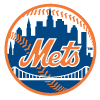 Carlos Carrasco, SP, Mets: Carrasco had a remarkable 2020 season, bouncing back from a year in which he missed time while battling leukemia to record a 2.91 ERA and a 29.3 percent strikeout rate in 12 starts. While his health issues this year are less serious, he's had a rather disrupted spring. He was delayed reporting to camp and then had to deal with a bit of elbow soreness. He looked to be getting over that issue but then tore his hamstring during conditioning drills and is expected to miss at minimum most or all April. It's certainly possible that Carrasco could return sometime in early May and pitch up to his usual standards for the rest of the year, but it's hard to have too much confidence in a 34-year-old who's dealt with multiple injuries before the end of March.
Carlos Carrasco, SP, Mets: Carrasco had a remarkable 2020 season, bouncing back from a year in which he missed time while battling leukemia to record a 2.91 ERA and a 29.3 percent strikeout rate in 12 starts. While his health issues this year are less serious, he's had a rather disrupted spring. He was delayed reporting to camp and then had to deal with a bit of elbow soreness. He looked to be getting over that issue but then tore his hamstring during conditioning drills and is expected to miss at minimum most or all April. It's certainly possible that Carrasco could return sometime in early May and pitch up to his usual standards for the rest of the year, but it's hard to have too much confidence in a 34-year-old who's dealt with multiple injuries before the end of March.
 Chris Sale, SP, Red Sox: As with most pitchers recovering from Tommy John surgery, Sale's return timeline is somewhat ambiguous. He underwent the procedure last March, meaning he'll likely be back sometime this summer, though it's still too far away to say with precision. News came last week that he's slightly further away than he should be, however. He thankfully hasn't dealt with any arm-related setbacks, but he was delayed this winter first by neck stiffness and then a battle with COVID-19. He's yet to advance to mound work, a point most pitchers reach 12 months into their recovery. There's a uniquely strong set of potential aces worth stashing this year as they make their way back from Tommy John, with Sale joined by Luis Severino and Noah Syndergaard. Sale has reached the highest heights of the trio, but he could potentially be the least valuable stash if his return date comes last.
Chris Sale, SP, Red Sox: As with most pitchers recovering from Tommy John surgery, Sale's return timeline is somewhat ambiguous. He underwent the procedure last March, meaning he'll likely be back sometime this summer, though it's still too far away to say with precision. News came last week that he's slightly further away than he should be, however. He thankfully hasn't dealt with any arm-related setbacks, but he was delayed this winter first by neck stiffness and then a battle with COVID-19. He's yet to advance to mound work, a point most pitchers reach 12 months into their recovery. There's a uniquely strong set of potential aces worth stashing this year as they make their way back from Tommy John, with Sale joined by Luis Severino and Noah Syndergaard. Sale has reached the highest heights of the trio, but he could potentially be the least valuable stash if his return date comes last.
 Jose Leclerc, RP, Rangers: Leclerc was featured as a riser just last week, as he didn't appear to have much competition for saves in the Rangers' bullpen. As it turns out, the injury bug going around that unit has bitten him as well, as he was diagnosed with elbow soreness Monday and will but shut down for an extended period. Exactly how long that period will be is unclear, so it's possible he's closing in Texas by midseason, but it's tough to stash him on a bench until then as he comes with both health and performance concerns. A shoulder tear limited him to just two innings last season, and he posted a mediocre 4.33 ERA in 2019. Unfortunately for those chasing saves, the Rangers' bullpen has been decimated by injuries, leaving non-roster invitees Ian Kennedy and Matt Bush battling with players like Josh Sborz, who owns a 6.08 ERA in 13.1 major-league innings. There's not much to get excited about, especially given that the Rangers may not produce too many save chances to begin with.
Jose Leclerc, RP, Rangers: Leclerc was featured as a riser just last week, as he didn't appear to have much competition for saves in the Rangers' bullpen. As it turns out, the injury bug going around that unit has bitten him as well, as he was diagnosed with elbow soreness Monday and will but shut down for an extended period. Exactly how long that period will be is unclear, so it's possible he's closing in Texas by midseason, but it's tough to stash him on a bench until then as he comes with both health and performance concerns. A shoulder tear limited him to just two innings last season, and he posted a mediocre 4.33 ERA in 2019. Unfortunately for those chasing saves, the Rangers' bullpen has been decimated by injuries, leaving non-roster invitees Ian Kennedy and Matt Bush battling with players like Josh Sborz, who owns a 6.08 ERA in 13.1 major-league innings. There's not much to get excited about, especially given that the Rangers may not produce too many save chances to begin with.
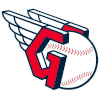 Cal Quantrill, SP, Cleveland: The pool of drafters at large seems fairly confident that Quantrill will be a member of Cleveland's rotation, as his 469.8 ADP ranks fifth among the team's starters, while Logan Allen's comes in sixth among that group at 707.9. While Quantrill did seem to enter camp as the favorite for the fifth-starter spot, the gap between the two may not have ever been quite that large, and it's certainly closer than it was a month ago due to the pair's respective Cactus League performances. Quantrill has been quite poor this spring, giving up 14 runs (12 earned) on 17 hits through 11 innings, striking out nine and walking nine. Allen, on the other hand, has allowed just a single run on six hits during his nine frames, backing that up with a strong 11:1 K:BB. Spring stats, of course, aren't the only thing that matters, and Quantrill does have a better track record in the pitchers' brief big-league careers, but it's hard to be fully confident that he'll have a job at this point. Those concerns lower his floor, and his ceiling was never all that high to being with, as he has a mediocre 4.47 ERA and a 20.8 percent strikeout rate in his 135 major-league innings. A low floor without a high ceiling to go with it means there are probably better lottery tickets available late in drafts.
Cal Quantrill, SP, Cleveland: The pool of drafters at large seems fairly confident that Quantrill will be a member of Cleveland's rotation, as his 469.8 ADP ranks fifth among the team's starters, while Logan Allen's comes in sixth among that group at 707.9. While Quantrill did seem to enter camp as the favorite for the fifth-starter spot, the gap between the two may not have ever been quite that large, and it's certainly closer than it was a month ago due to the pair's respective Cactus League performances. Quantrill has been quite poor this spring, giving up 14 runs (12 earned) on 17 hits through 11 innings, striking out nine and walking nine. Allen, on the other hand, has allowed just a single run on six hits during his nine frames, backing that up with a strong 11:1 K:BB. Spring stats, of course, aren't the only thing that matters, and Quantrill does have a better track record in the pitchers' brief big-league careers, but it's hard to be fully confident that he'll have a job at this point. Those concerns lower his floor, and his ceiling was never all that high to being with, as he has a mediocre 4.47 ERA and a 20.8 percent strikeout rate in his 135 major-league innings. A low floor without a high ceiling to go with it means there are probably better lottery tickets available late in drafts.
 Oscar Mercado, OF, Cleveland: Fantasy players love hitters who could provide both power and speed. Mercado looked set to be one of those players following a rookie season in 2019 in which he was one of 25 players to reach both 15 homers and 15 steals, managing that exact mark in both categories while playing just 115 games. That promise kept him on the radar this winter as a bounce-back candidate following an awful sophomore season in which he hit .128/.174/.174, stealing three bases in 36 games while hitting a single homer. He's carried his struggles into the spring, hitting .214/.241/.286 through 10 Cactus League contests. Despite the lack of an obvious alternative in center, Cleveland sent him to minor-league camp Sunday, a full 10 days before the start of the regular season, indicating that he's not particularly high on the team's depth chart. If players like Amed Rosario and Bradley Zimmer fail to impress to open the season, Mercado could step back into the role at some point, but he's not worth holding onto in many formats.
Oscar Mercado, OF, Cleveland: Fantasy players love hitters who could provide both power and speed. Mercado looked set to be one of those players following a rookie season in 2019 in which he was one of 25 players to reach both 15 homers and 15 steals, managing that exact mark in both categories while playing just 115 games. That promise kept him on the radar this winter as a bounce-back candidate following an awful sophomore season in which he hit .128/.174/.174, stealing three bases in 36 games while hitting a single homer. He's carried his struggles into the spring, hitting .214/.241/.286 through 10 Cactus League contests. Despite the lack of an obvious alternative in center, Cleveland sent him to minor-league camp Sunday, a full 10 days before the start of the regular season, indicating that he's not particularly high on the team's depth chart. If players like Amed Rosario and Bradley Zimmer fail to impress to open the season, Mercado could step back into the role at some point, but he's not worth holding onto in many formats.


